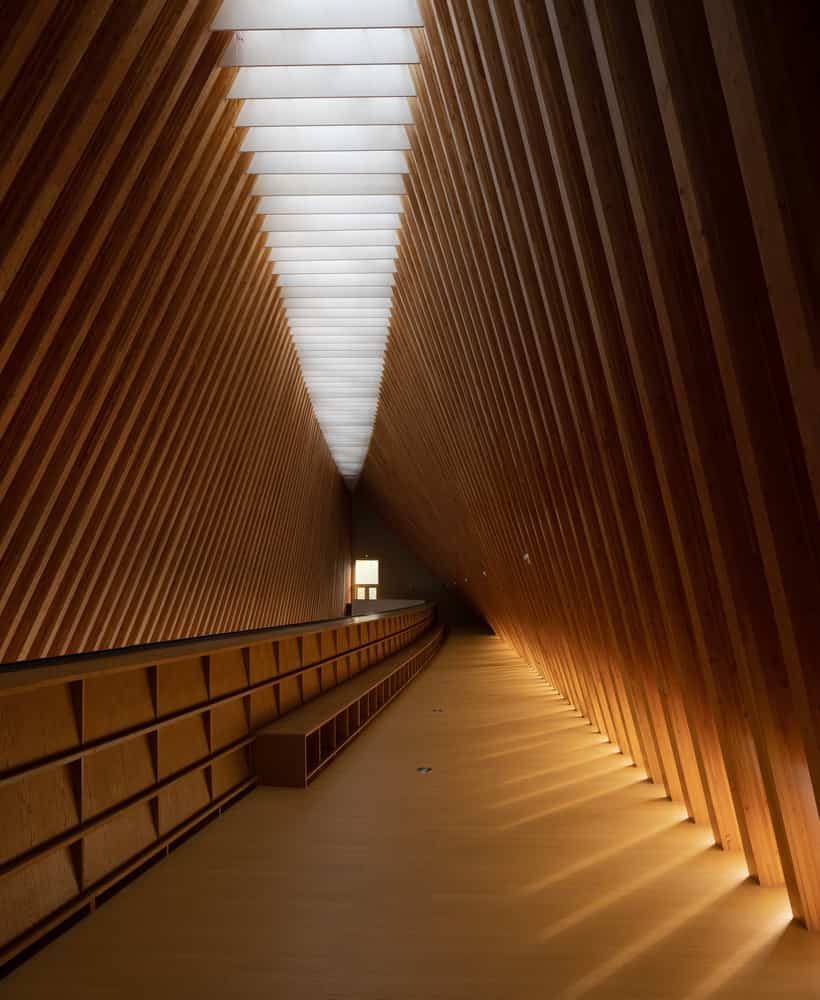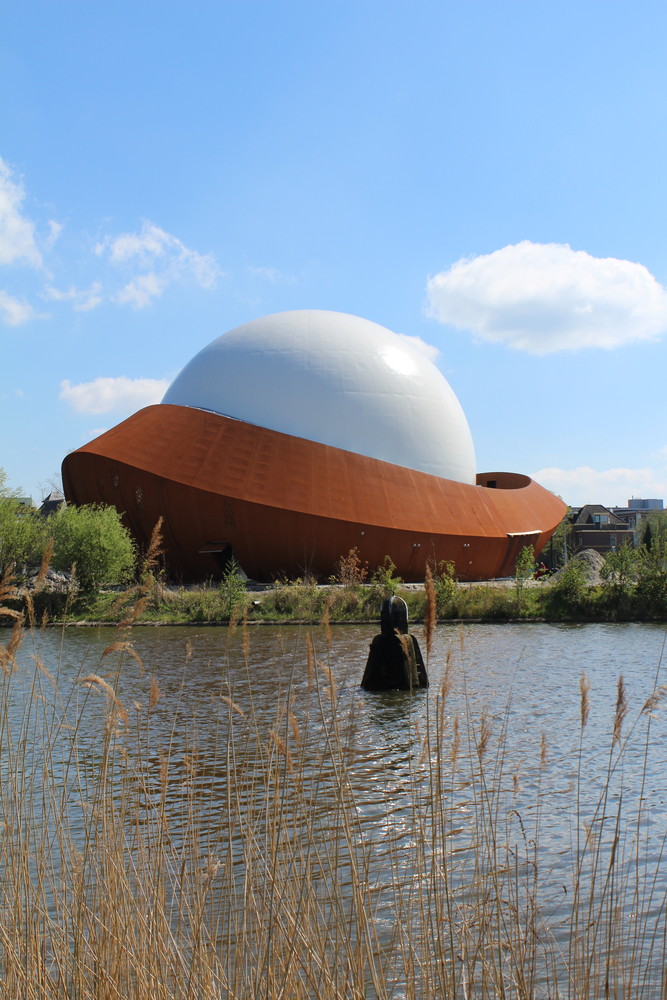The Big Barn, located within the Yu Niao Liu Su Area of Liangzhu New Town in China, stands as a landmark blending spirituality with functionality. Drawing inspiration from historical architectural prototypes found in the Archaeological Ruins of Liangzhu City, the design embodies a fusion of tradition and innovation. Its distinctive features include a unique shell roof structure spanning 56 meters, supported by concrete shear walls, and complemented by open sides for expansive views. The long, thin steel column corridors and elevated micro-terrain base add depth and dimension to the space, creating an immersive environment that invites exploration and contemplation. Ultimately, the Big Barn serves not only as a place for diverse activities but also as a transformative architectural experience.
The site of the Big Barn is within the Yu Niao Liu Su Area of Liangzhu New Town, to the west of the Liangzhu Center of Arts (the Big Roof). The long and narrow site indicates a horizontal and linear architectural volume. We hope to create here not only a spiritual architecture as a landmark but a place to accommodate diverse activities.
The design follows the composition of the three elements, roof, column and base (Ji”亼”+Cao”屮”+Wei”囗”). The prototype was first revealed engraved on a ceramic piece in the Archaeological Ruins of Liangzhu City, indicating the origins of architecture on this land. Based on such a historical prototype, the structural and spatial systems interact with one another on the site, seeking to create a special place.
The conventional double-pitched roof is extended into a linear long roof due to functional needs. The ridge twists into a diagonal line based on the surrounding spatial conditions, and further opens up to introduce natural skylight. Thus the curved roof not only achieves the spirituality of space but becomes a bridge-type shell structure.
The shell roof of steel and wood at a span of 56 meters is vertically supported by the concrete shear walls at both ends, so that the two other sides of the building are completely open, providing a continuous and spacious view. The long thin steel column corridors on both sides of the eaves also provide the roof with an exterior wind resistance structural system and stress the horizontal openness towards both sides. The corridors stretch along the site and slowly elevate, forming an open-air courtyard space.
The micro-terrain site lifted 70 centimeters from the ground generates a base for the architecture by means of landscape, and results in descending space in the interiors, giving an experience of a contemporary “base”. The roof of the Big Barn not only provides a big space of spirituality but also holds an interlayered space, offering spatial potentials for multi-scale functions. Entering the space feels almost defenseless. One seems to fall into the space when entering, immersed within it immediately, thus making it a memorable place.












